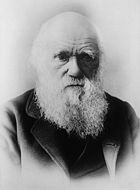 By 1879 Darwin had suffered years of illness. Despite repeated bouts of illness during the last twenty-two years of his life, Darwin’s work continued. Having published “On the Origin of Species” as an abstract of his theory, he went on with experiments, research and writing of his “big book”, covering humankind’s descent from earlier animals including evolution of society and of human mental abilities, as well as diversifying into innovative plant studies and explaining decorative beauty in wildlife.
By 1879 Darwin had suffered years of illness. Despite repeated bouts of illness during the last twenty-two years of his life, Darwin’s work continued. Having published “On the Origin of Species” as an abstract of his theory, he went on with experiments, research and writing of his “big book”, covering humankind’s descent from earlier animals including evolution of society and of human mental abilities, as well as diversifying into innovative plant studies and explaining decorative beauty in wildlife.
Enquiries about insect pollination led in 1861 to novel studies of wild orchids showing adaptation of their flowers to attract specific moths to each species and ensure cross fertilisation. “Fertilisation of Orchids” published in 1862 gave his first detailed demonstration of the power of natural selection, explaining the complex ecological relationships and making testable predictions. As his health declined, he lay on his sickbed in a room filled with inventive experiments to trace the movements of climbing plants. Ernst Haeckel, a zealous proponent of Darwinism, favoured progressive evolution over natural selection. Wallace remained supportive, though he increasingly turned to Spiritualism.
The first part of Darwin’s “big book”, “Variation of Plants and Animals Under Domestication”, grew to two huge volumes, forcing him to leave out human evolution and sexual selection. It sold briskly in 1868 despite its size, and was translated into many languages. He wrote most of a second section on natural selection, but it remained unpublished in his lifetime.
Lyell had already popularised human prehistory, and Huxley had shown that anatomically humans are apes. With “The Descent of Man”, and “Selection in Relation to Sex” published in 1871, Darwin set out evidence from numerous sources that humans are animals, showing continuity of physical and mental attributes, and presented sexual selection to explain impractical animal features for instance the peacock’s plumage. He dealt with human evolution of culture, differences between sexes, and physical and cultural racial characteristics, while emphasising that humans are all one species. His research using images was summarized in his 1872 book “The Expression of the Emotions in Man and Animals” which discussed the evolution of human psychology and its continuity with the behaviour of animals. Both books proved very popular, and Darwin was impressed by the general assent with which his views had been received, remarking that “everybody is talking about it without being shocked.”
His evolution-related experiments and investigations culminated in books on the movement of climbing plants, insectivorous plants, the effects of cross and self fertilisation of plants, different forms of flowers on plants of the same species, and “The Power of Movement in Plants”. In his last book he returned to “The Formation of Vegetable Mould through the Action of Worms”.
He died in Downe, Kent, England, on 19 April 1882. He had expected to be buried in St Mary’s churchyard at Downe, but at the request of Darwin’s colleagues, William Spottiswoode (President of the Royal Society) arranged for Darwin to be given a state funeral and buried in Westminster Abbey, close to John Herschel and Isaac Newton. Only five non-royal personages were granted that honour of a UK state funeral during the 19th century.

